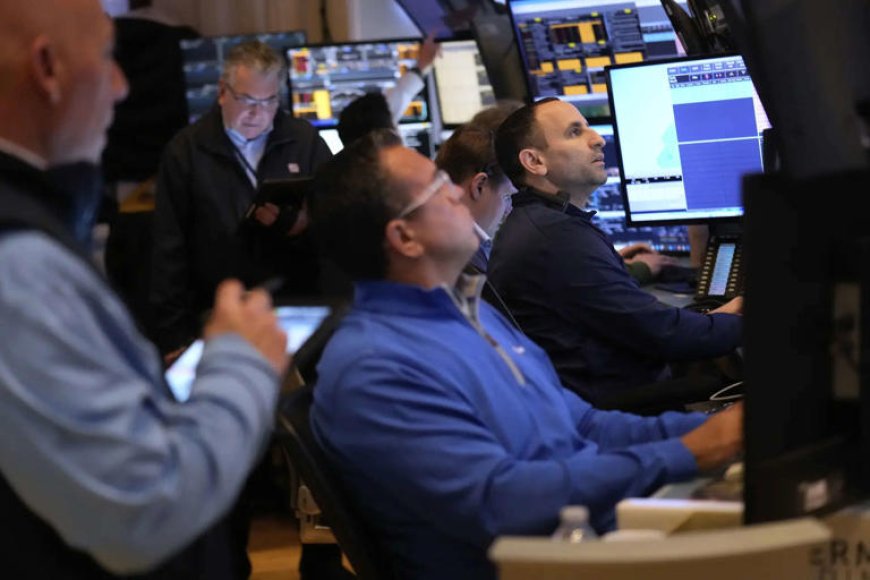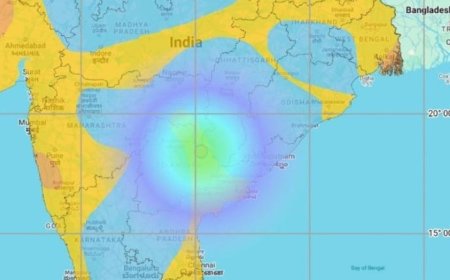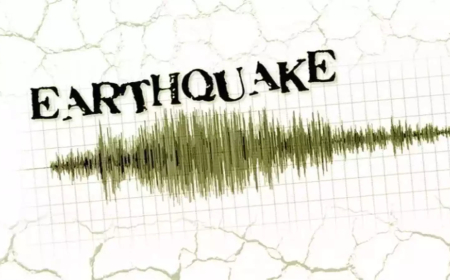Huge Drop in US Stock Markets, $4 Trillion Lost Since Last Month’s High
The US stock markets have seen a massive decline, with a staggering $4 trillion vanishing from market value since last month’s highest point. Discover the reasons behind this market meltdown, key factors driving the downturn, and what it means for investors going forward.

US Stock Markets in Freefall: $4 Trillion Wiped Out in a Month
The US stock markets have been experiencing one of their most turbulent phases in recent history, with a jaw-dropping $4 trillion disappearing from the market in just a month. The sharp drop has rattled investors and analysts alike, raising concerns about economic stability and future investment trends. Let's break down the reasons behind this massive decline, its impact on investors, and what could happen next.
1. The Scale of the Market Decline
-
Over the past month, the total market capitalization of US stocks has shrunk by a staggering $4 trillion.
-
Major indices, including the S&P 500, Dow Jones, and Nasdaq, have seen significant losses, leading to widespread panic among investors.
-
This dramatic drop marks one of the worst monthly performances in recent times, with some stocks losing over 20% of their value.
2. Key Reasons Behind the Stock Market Crash
Several factors have contributed to the sharp decline in stock prices. Some of the most crucial ones include:
a) Rising Interest Rates by the Federal Reserve
-
The Federal Reserve has been aggressively increasing interest rates to control inflation.
-
Higher interest rates make borrowing more expensive, which slows down business expansion and impacts corporate earnings.
-
Investors often shift money out of stocks and into safer assets like bonds when rates rise.
b) Concerns About an Economic Recession
-
Many experts warn that the US economy could be heading toward a recession.
-
Slower growth, declining consumer spending, and weaker corporate earnings contribute to these fears.
-
Investors are pulling out of stocks, anticipating tougher times ahead.
c) Global Market Uncertainty and Geopolitical Tensions
-
International tensions, trade disputes, and conflicts have added to market volatility.
-
The global economic slowdown has further intensified worries about the performance of multinational companies.
-
Supply chain disruptions and higher costs of raw materials have led to reduced corporate profitability.
d) Tech Stock Collapse and Market Correction
-
The technology sector, which had been a major driver of stock market growth, has seen massive declines.
-
Investors have been selling off high-risk stocks, particularly in the tech industry.
-
Some of the biggest companies, including Apple, Amazon, and Tesla, have faced sharp losses.
3. How Investors Are Reacting to the Market Drop
-
Many investors have been selling off their stocks in panic, leading to further declines.
-
Institutional investors are shifting towards safer investments like gold and government bonds.
-
Some long-term investors see this as a buying opportunity, picking up stocks at lower prices.
4. Impact on Different Sectors
-
Technology: Tech companies have suffered the most, with major firms losing billions in market value.
-
Banking & Finance: Rising interest rates have affected bank stocks, but some financial firms have benefited from increased lending rates.
-
Energy & Commodities: Energy stocks have remained relatively stable due to strong demand and high oil prices.
-
Retail & Consumer Goods: Consumer spending is slowing down, affecting retail and manufacturing businesses.
5. Is the Market Crash a Sign of a Bigger Crisis?
-
While this drop is alarming, analysts are divided on whether it signals a long-term economic downturn.
-
Some experts believe that the market is undergoing a necessary correction after years of high valuations.
-
Others worry that a prolonged decline could push the economy into a deeper crisis.
6. What Should Investors Do Now?
a) Stay Calm and Avoid Panic Selling
-
Selling stocks out of fear can lead to losses that are hard to recover.
-
History shows that markets tend to recover over time, even after major crashes.
b) Diversify Investments
-
Investors should consider spreading their investments across different asset classes.
-
Bonds, gold, and defensive stocks (such as healthcare and utilities) can provide stability.
c) Focus on Strong, Fundamental Stocks
-
Companies with strong financial health and long-term growth potential can weather market downturns better.
-
Avoid highly speculative stocks that have shown extreme volatility.
d) Keep an Eye on Federal Reserve Policies
-
Interest rate decisions by the Federal Reserve will have a major impact on market movements.
-
Investors should monitor economic indicators like inflation, employment data, and GDP growth.
7. How Long Will This Market Turbulence Last?
-
Market recoveries can take time, depending on economic conditions and investor sentiment.
-
Some experts predict that if inflation stabilizes and interest rate hikes slow down, markets could rebound within months.
-
However, if economic data worsens, further declines could be on the horizon.
8. Conclusion: A Tough Phase, But Opportunities Exist
The recent crash in the US stock markets has erased trillions of dollars, causing fear and uncertainty. However, investors who remain patient, diversify their portfolios, and focus on strong businesses may still find opportunities in the long run. While the road to recovery may be bumpy, history suggests that markets tend to bounce back stronger after a major downturn.
What's Your Reaction?





























































